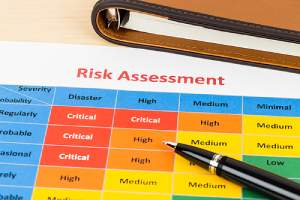 Disaster recovery plans help organizations respond quickly and appropriately to unplanned incidents, such as power outages, natural disasters, cybercrimes and other disruptive events. This formal document should include detailed instructions on how to recover business operations and minimize losses.
Disaster recovery plans help organizations respond quickly and appropriately to unplanned incidents, such as power outages, natural disasters, cybercrimes and other disruptive events. This formal document should include detailed instructions on how to recover business operations and minimize losses.
Important Facets Of A Disaster Recovery Plan
One of the best ways that an organization can protect itself and prepare for unexpected incidents in the future is by developing a detailed disaster recovery plan. A disaster recovery plan should contain several important facets that help ensure that the business is able to recover in a short amount of time with as few damages as possible. Some of the most important facets of a disaster recovery plan include:
Complete Inventory Of IT Assets
Every business disaster recovery plan should have assets listed by priority based on which equipment has the greatest impact on the organization. IT assets can include both digital and physical assets, such as software and hardware. It is not always possible to recover assets as soon as a disaster occurs; therefore, having a list readily available can help determine which assets to focus on first. The inventory should include a list of all assets to include servers, applications, storage devices, access points, data network switches, and network appliances. There should be an adjoining map that details where each asset is located and which network it is on, if applicable.
A Risk Assessment Of IT Assets

Defining Criticality Of Applications & Data
The next component that should be included in a business disaster recovery plan is the criticality of data and applications. Businesses should classify data and applications based on feedback from staff about the criticality of each data set and application. After that, commonalities should be grouped based on their criticality and frequency of change. It can be helpful to get other people in the business involved in the process to ensure that the plan is well supported. Also, limit the number of data classes to avoid an overly complex plan. Medium-sized businesses should stick with three to five classes.
Clear Definition Of Recovery Objectives
Each data class will have unique objectives based on their criticality. Before setting recovery objectives, it is important to acquire feedback from other business leaders to ensure that the business as a whole is able to recover from a disaster. When communicating with staff, ask a variety of important questions, such as what applications the departments use, their tolerance for downtime, and data loss, and if there are certain requirements for security, data retention, and data transfer. This step involves understanding business needs and priorities and how they align with recovery objectives.
Selecting The Proper Tools & Techniques
The tools and techniques included in a disaster recovery plan will be unique for each business and based on the identified IT assets and groups. There is a wide variety of solutions available to modern business but there is no one-size-fits-all option. Too much protection and a business are needlessly wasting money. Not enough protection and the business remains at risk. Consider what tools and techniques would be most useful in the event of a disaster, such as offsite protection located in a facility at least 25 miles or more away. Also invest in automation tools that can help businesses save money and streamline recovery processes in case IT staff are not available.
Continuous Testing & Improvements

Speak To An Experienced Managed IT Services Provider
When properly written and implemented, a disaster recovery plan can help minimize the effects of a disaster and enable a business to quickly resume business operations with minimal damage. An experienced managed IT services provider can help businesses get started with the creation of a disaster recovery plan. Reach out to the IT support professionals at TCB Associates Inc to learn more. Call us at (703) 783-2781 or contact us online to speak with a professional managed IT services provider at TCB Inc.
